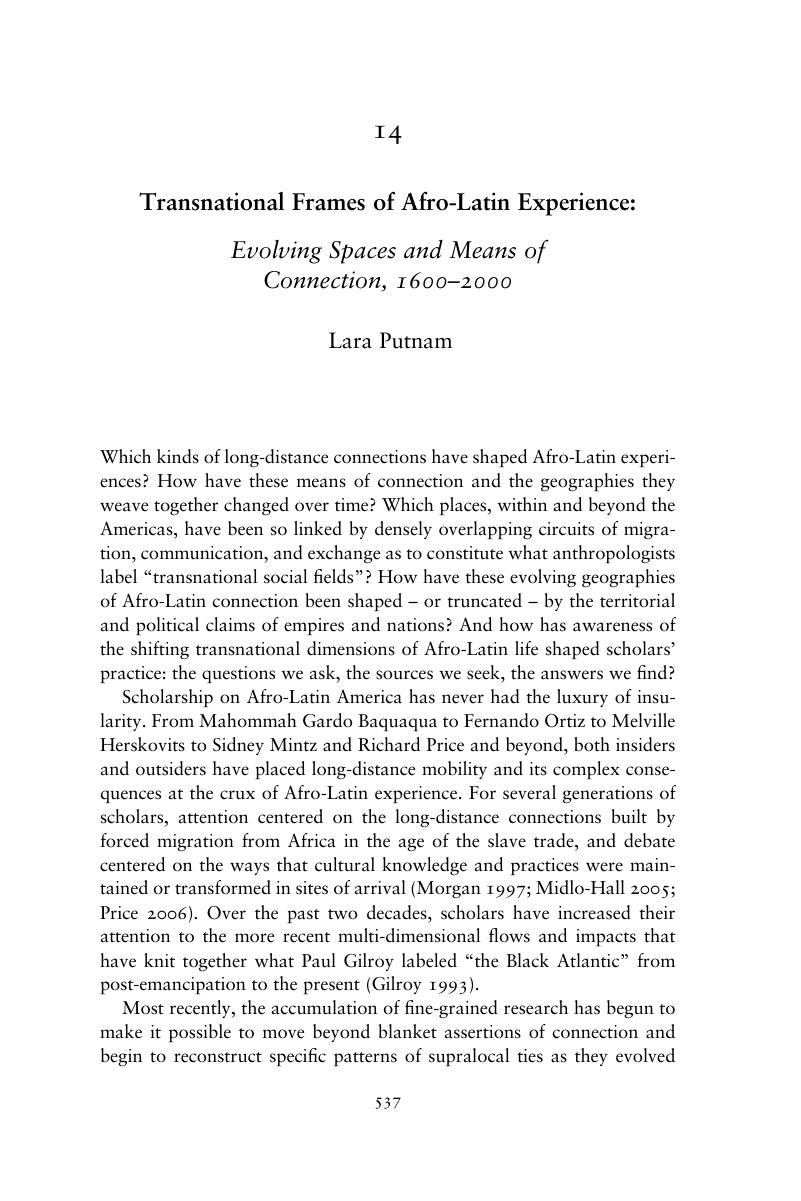Book contents
- Afro-Latin American Studies
- Afro-Latin America
- Afro-Latin American Studies
- Copyright page
- Contents
- Figures
- Tables
- Contributors
- Acknowledgments
- 1 The Making of a Field
- Part I Inequalities
- Part II Politics
- Part III Culture
- Part IV Transnational Spaces
- 14 Transnational Frames of Afro-Latin Experience
- 15 Afro-Latinos
- Index
- References
14 - Transnational Frames of Afro-Latin Experience
Evolving Spaces and Means of Connection, 1600–2000
from Part IV - Transnational Spaces
Published online by Cambridge University Press: 24 April 2018
- Afro-Latin American Studies
- Afro-Latin America
- Afro-Latin American Studies
- Copyright page
- Contents
- Figures
- Tables
- Contributors
- Acknowledgments
- 1 The Making of a Field
- Part I Inequalities
- Part II Politics
- Part III Culture
- Part IV Transnational Spaces
- 14 Transnational Frames of Afro-Latin Experience
- 15 Afro-Latinos
- Index
- References
Summary

- Type
- Chapter
- Information
- Afro-Latin American StudiesAn Introduction, pp. 537 - 568Publisher: Cambridge University PressPrint publication year: 2018
References
- 5
- Cited by

